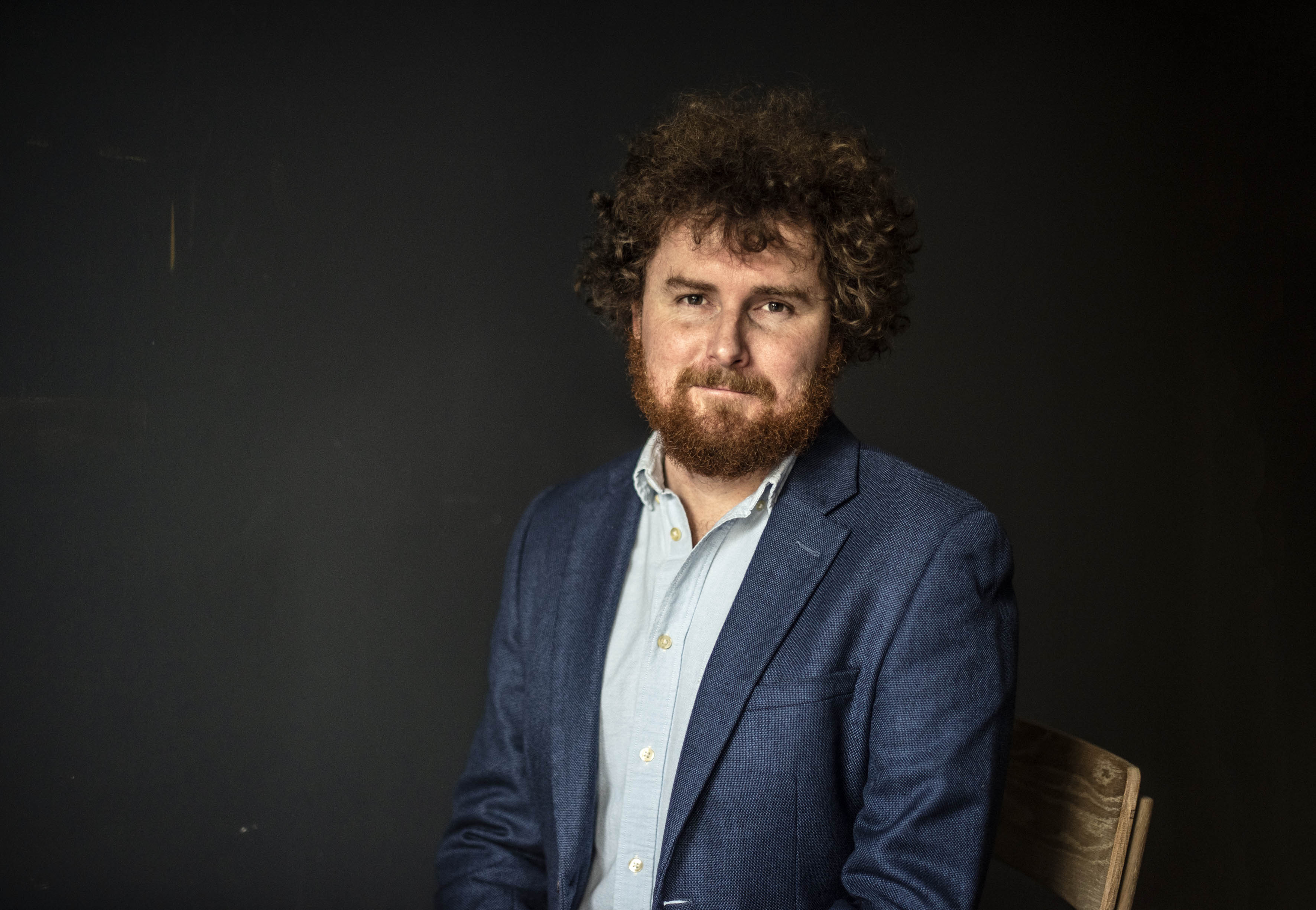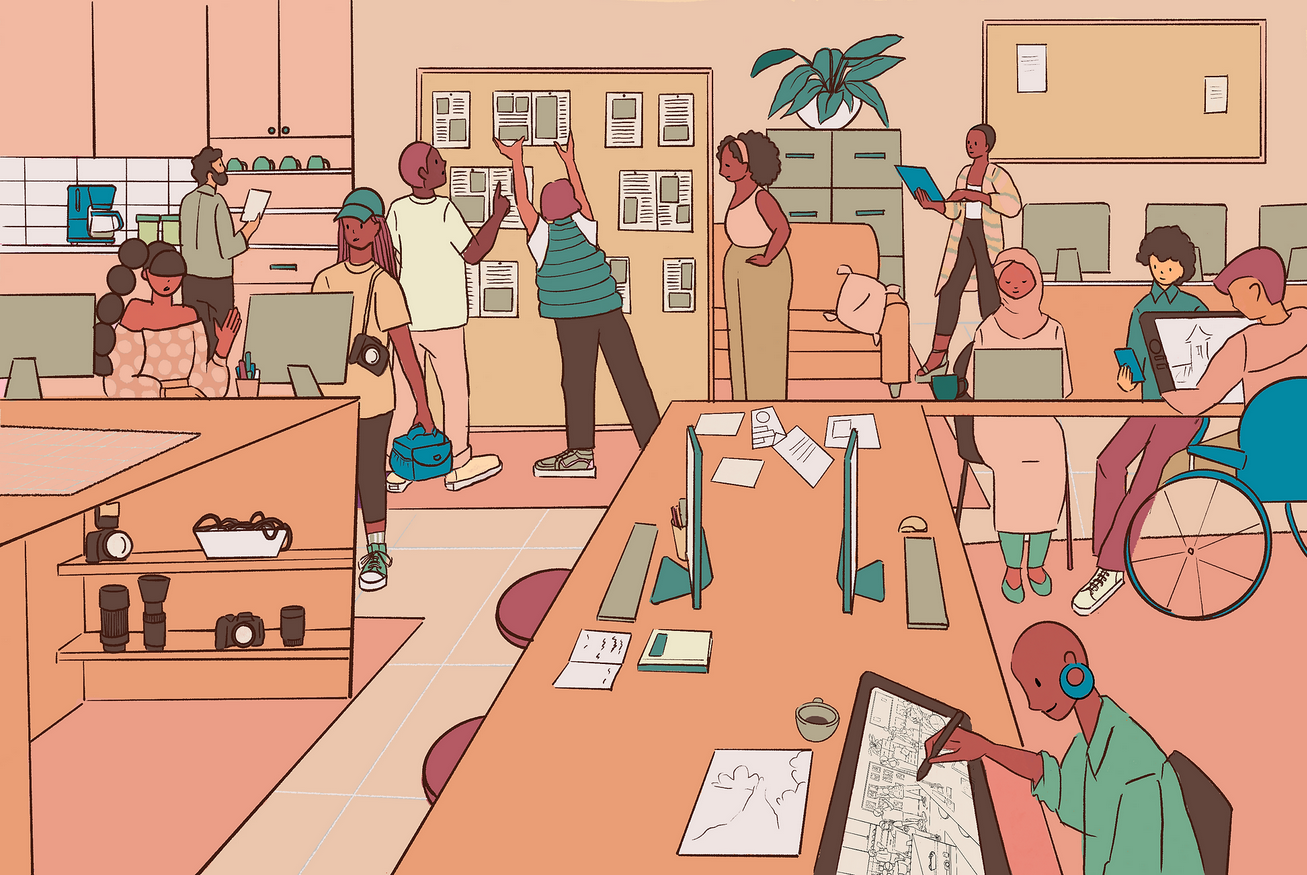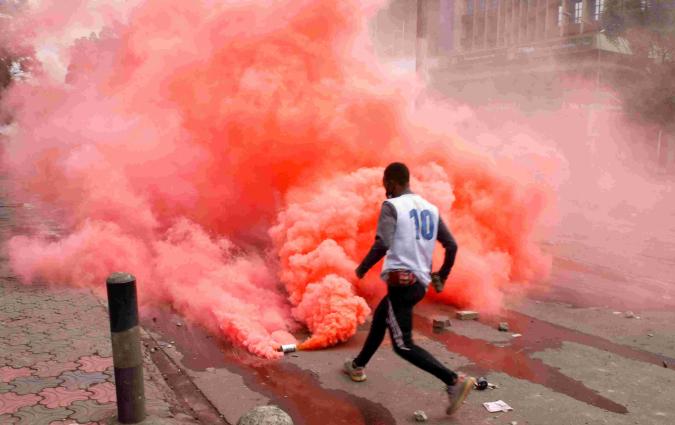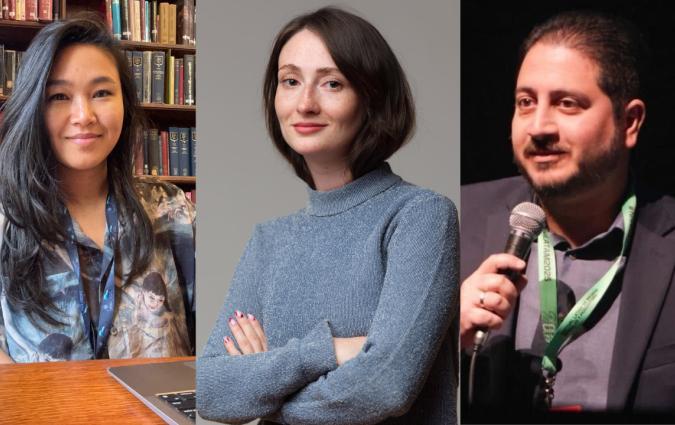From pan-African to South African: The team behind 'The Continent' launches a second WhatsApp newspaper

Sipho Kings. Credit: Paul Botes.
The Friday Paper’s first edition opens with the story of a theft: the theft of the newspaper. Or, more accurately, of the laptop on which the final version of the pilot edition was stored.
Fortunately, the team behind this newly launched South African newspaper already has a relationship with their readers, counting 32,000 direct subscribers. So they were frank about the reasons behind some of the broken links and minor mistakes in the version sent out to them.
The same group of journalists already publish The Continent, a pan-African publication launched in 2020. Like the newborn Friday Paper, it is a PDF e-paper distributed mostly on WhatsApp.
Part of a new generation of newspapers sent out via messaging platforms instead of social media, Google search or print, The Friday Paper and The Continent aim to tap into a growing audience, particularly in the Global South.
Around a fifth of audiences worldwide access news content on WhatsApp weekly, according to our Digital News Report 2025. In South Africa, this proportion is twice as high at 41%. Messaging apps are also much less likely to be perceived as a mis- and disinformation threat in comparison to social platforms like Facebook and TikTok, which suggests potential for higher trust in content shared there.
I spoke to Sipho Kings, co-founder and publisher of both The Continent and The Friday Paper, on the launch of this new initiative, the lessons learnt from The Continent and what the team may do differently this time. Our conversation has been lightly edited for length and clarity.
Q. Tell me about this new newspaper that you're starting. I read in your prototype paper that your designer’s laptop was stolen just before you finished it.
A. It's always good to have an origin story, isn't it? Yes, it's a real thing that happened on Friday morning, but we made it through. And what's nice about our tone and relationship with readers is that you can have the kind of thing in the newspaper where you say, ‘Hey, look what happened,’ instead of trying to hide it. We launched the pilot on Friday, [October 3rd]. It took us four weeks from deciding we should do it to the launch itself. It's been a whirlwind.
Q. How did you manage to do this so quickly?
A. One of the core aspects is the team. In this particular case, most of the work was in collaboration with outsiders. The Continent team is still working on the main newspaper full-time. But once you have a format and you know people, it can move really fast. There are many stories in the world.
Q. So you're mainly working with contributors for the new paper?
A. Yes. At the moment, it is a pilot, and then we are going to run probably one every month while we fundraise and get advertising. And then we can turn it into a full-time thing. Currently, our team is volunteering, but we're paying the designer, a copy editor and contributing writers to work on the newspaper. This is what we did when we launched The Continent five years ago. Everyone had full-time jobs, and we were doing this in our spare time, because if it works, then you can all quit the horrible jobs you have. This is our sales pitch to people.
Q. Who wrote the articles in this first issue? Journalists who have regular jobs at South African newspapers?
A. We're trying to create a space with different kinds of writers, so not people who appear in every newspaper every week in South Africa. The reporters and photographers have their bylines in the pilot. Most of the team at The Continent and our admin side put in time. Then a bunch of the other people volunteered their time and did so outside of their existing jobs. In total, about 20 people helped put together this pilot, with our co-founder Simon Allison taking point on pulling the newspaper together.

Q. How did you come up with the name?
A. The hardest thing in the world is finding a name for a new publication. We had intense internal discussions, we got down to two finalists, and then we put it out to a vote. We did a quick tally form and shared it with people. We got 1,100 votes, and The Friday Paper won.
Q. I've never really thought about where newspaper names come from.
A. It is horrific. Earlier this year, we wanted to launch a city-specific newspaper just for Johannesburg. And the single biggest obstacle was that we couldn't think of a cool name, and we couldn't get past that. There were many other reasons, but we gave up.
Q. So launching a newspaper has been in the works for a while.
A. Yes. We know this model works. We know our readers really love it, and there's an emotional response to it, but it is also a solution for journalism with [the threats posed by] AI, search and everything else. We're acutely aware that we need to show that this model works in different markets. Other people have started newspapers in a similar bespoke PDF format, such as Atar in Sudan, Pambazuka in Tanzania, and L’Hebdo in France.
When you’ve got that, the distribution format doesn’t matter. You can share The Friday Paper and The Continent via Bluetooth. This is really important in building media products that don't rely on algorithms. We just need to reimagine newspapers. We've been thinking that we needed to make more than one newspaper for a long time. At The Continent, two-thirds of our subscribers are on WhatsApp, but we also reach people on Signal, email, and Telegram.
Q. Are you using the same distribution for The Friday Paper?
A. We are, but it's also a really good chance to experiment. We could create it fast because we have a template. We need to test ourselves in everything else. Do we want to use WhatsApp, or do we want to use something else? How do we give it to people? And then, how do we bake advertising into it as well?
Q. Do you fund The Continent with advertising?
A. The Continent is almost entirely philanthropic, and that works; there are enough people who support the idea. We’ve been funded by a mix of organisations in our five years, including the Ford Foundation, OSF, 11th Hour Foundation, the Rockefeller Foundation, Luminate, the African Climate Foundation, the Fred Foundation, the Mott Foundation, GIZ, and NED.
On reader support, we have an open donation option, but we don’t push it – at the moment, our ask of readers is to share the newspapers judiciously so the journalism gets to more people. That said, readers have asked us to make it simpler for them to support us, and we’ll do that in a website revamp. We’re also launching a merchandise range so people can support us and wear cool things.
One of the great things about a country edition is that there’s a much stronger business case there. If you are reporting on a whole continent, it's hard to get companies interested in that. But for the country edition, we can do that, which is also why we were thinking about a city edition. So at the moment, it's a philanthropic project, but the new newspaper will have a much different mix. For now, we are self-funding The Friday Paper. That's why we're running pilots. As soon as we reach our fundraising and advertising goals, we can go full-time.
Q. Who are you envisioning as the audience for The Friday Paper?
A. South Africans who love their country, but also understand that it has many problems, people interested in nuance who want to know what's happening. Also, people in the diaspora, and people who are interested in South Africa, but primarily people in the country who care about it.
Q. Do you think this audience would overlap with The Continent’s at all?
A. This is one of those things we've agonised about a lot, audiences cannibalising each other, and my answer is no, because they cater to different interests. Also, the new paper is only on a Friday, and The Continent comes out on a Saturday. So in a future scenario where we have many of these, you can read your country’s news on a Friday and The Continent on a Saturday.
Q. Is the idea for The Friday Paper to stay with The Continent team or to have it be a slightly more independent entity?
A. It will have its own newsroom. So once they're fully running, we'll have two entirely independent newspapers in the same organisation, and we have thought about spinning it off as a non-profit, but that's just too much work. We don't need to solve everything all at once.
Q. Can you explain what the news media is like at the moment in South Africa?
A. The South African news industry used to be four big media houses; they ran all the newspapers, and they've been dying for 15 years, like everywhere else. And what's happened in that dying process is that most of them have come under political control. One of them is part-owned by the Chinese government. There are all sorts of iffy things about ownership and how that trickles into editorial control. There is a lot of race and class politics in South Africa. Some newspapers appeal to rich white people. So there's a huge part of the country that isn't served by quality journalism. The industry is dying, and GenAI and Google will hasten that end, which is why there's a real opportunity.
Q. Do you think distributing through different channels is the way forward for the industry?
A. Yes, because this bet that we made [as the journalism industry], where we based our entire system and business model on convincing Meta and Google to share our journalism, has given them all of our content, and it's gotten rid of so much curation ability.
We used to say, here's a product that we as professional journalists have created, lead it once a week, once a day, etc. We ruined that, and no one trusts us. No business models work, so we've got to try something different, and meeting people where they are, which is what we're doing, going through WhatsApp, Signal, and Telegram, is a solution for that.
Q. Do you see this as something that can be replicated beyond Africa?
A. South America is all on WhatsApp, and a large part of Southeast Asia too. So in all of those areas, that's where people are, where they're sharing nonsense and need journalism, which is why, when we first created the content, we built it around getting it onto WhatsApp.
The problem is that journalists are still using those platforms to share links and try and bring them back to a website, which is not how people read, especially in low-data countries. If I share a link with you, it means you have to leave WhatsApp and go to a website, and then you’re paying data charges for that. Whereas WhatsApp in a lot of countries is subsidised or free, so if I'm making a single product in WhatsApp, you can read it for free.
Websites are also mostly horrible: if you go onto a news website, most of them are destroyed by pop-up adverts. It's a discombobulating experience: you go there, you read it, and you don’t feel like you've achieved anything; you haven't finished. Where's the model of just having a newspaper, which means you can read it once, and then you're done?
And also, really long articles are a problem. Because the internet has made us all believe that a story should be 2,000 words when there should be very few that are 2,000 words.
Q. My editor will agree that I am someone who always goes over the word limit.
A. That’s a healthy tension. We're starting a new newspaper and have to convince journalists of this. Our news articles are 300 words; a really intensive feature might be 900-1200 words, but convincing journalists of that is quite hard. I guess one of the challenges of launching is going to be to convince a whole journalism community that the story can be 600 words and be fantastic.
Q. Was it also tough to convince journalists that their work is best communicated through a messaging app?
A. Yes and no. A lot of journalists went through the print newspaper. They were told digital-first is the future, and that promise hasn't been delivered. So people are really excited to be back in a tangible thing with borders and boundaries, and it has illustrations and pictures.
Readers really love it too. We do in-depth reader surveys once a year: we ask very detailed questions about people's reading experience. And people really like the form. In this day and age, where people are so jaded about journalism and overwhelmed by push notifications, our readers keep using the words ‘fun’, ‘love’ and ‘trust’ when talking about the newspaper. So this is why, when we're starting a new thing, we know it works, and we know people want this. We've got to solve the other parts of advertising and the business model.
Q. How many readers does The Continent have?
A. We have 32,000 direct subscribers. And then, through how people share, we can extrapolate from our reader surveys a readership of about 150,000. It's almost impossible to track, but someone will drop it in their church group, their family chat or their work Slack channel, and you can't keep track of all of those shares.
Q. Do you rely a lot on word of mouth to broaden your readership?
A. Yes, we've never advertised. All of our work has been organic, and we could have gone much faster. We didn't, because if I give you a newspaper, you're going to trust it more. That's a really powerful community. [The Continent has a minimal website with the links to all its distribution channels, a link to donate and an archive of its past editions.]
Q. Do you have a target for The Friday Paper?
A. At the core of The Continent’s growth has been organic sharing. Its first edition went out to a few dozen friends and family. In this way, all of the current 32,000 subscribers got it from someone else, with the implicit vote of trust that comes with that. We haven’t taken out any advertising or tried to juice SEO. And that has been on purpose. If we had, we could have had a much larger audience on paper, but not one we want. We are repeating this with The Friday Paper.
For starters, we ran the survey asking for input on the name. There, we asked people to share their details if they wanted to get the pilot edition. We then asked the readers of The Continent if they wanted the edition. That’s brought in over 500 new subscribers in the last few days. This is helping to create a core, engaged subscriber group that we can then ask to help distribute the newspaper far and wide when we start full-time publication.
If we can raise money, we want to start publishing weekly next year and then get to 10,000 subscribers by the end of 2026. It's a lot, but we should be able to do it. All that said, we live in a world where Donald Trump hates South Africa, so there are many asterisks to working in this environment.
Q. It’s interesting to see you taking quite a different approach to established media.
A. We have to. The other things haven't worked. Every year, reports and studies all show that this is failing. So if we keep doing business as usual, only one thing's gonna happen.
In every email we send you'll find original reporting, evidence-based insights, online seminars and readings curated from 100s of sources - all in 5 minutes.
- Twice a week
- More than 20,000 people receive it
- Unsubscribe any time







